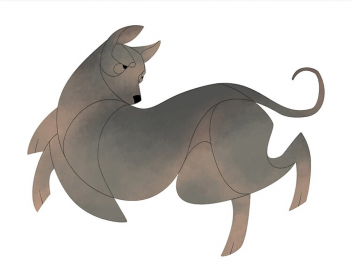
Nicaraguans have a rich mythological culture that has given rise to the creation of Dantesque tales and folktales, and one of their legends holds that hairless dogs are hairless because their skin was burned from being born out of a volcano. Volcanos, as an aside, appear in many legends of Latin American origin, including contemporary tales such as Manlio Argueta’s book, Magic Dogs of the Volcanoes, which tells of magical dogs living on the volcanoes of El Salvador.
Pop quiz: How many hairless breeds would you say there are?
We’re betting the consensus answer among readers would be four: The American Hairless Terrier, the Chinese Crested Hairless, the Xoloitzcuintli, and the Peruvian Inca Orchid.
In fact, there are several more. They include the Argentine Pila Dog, the Abyssinian Sand Terrier, the Ecuadorian Hairless Dog, the African Hairless Dog, the Hairless Khala, and the Jonangi Dog. The aforementioned breeds are quite rare, and some might argue that a couple of them aren’t even “pure” breeds, or that they are actually descendents of a recognized hairless breed. We’ve encountered the argument, for example, that the Argentine Pila Dog is a direct descendant of the Peruvian Inca Orchid because of the Incan colonization of Argentina during the 15th century, or that the Ecuadorian Hairless Dog is a variant of the Peruvian Inca Orchid (which, in fact, some say could be disputed by the fact that the Ecuadorian Hairless has shortest tail of all hairless breeds).
We mentioned these breeds nevertheless because they have been known for in their respective countries for a very long time.
Interestingly, an article in Forbes magazine reported in 2017 that distantly related breeds such as the Xoloitzcuintle and the Peruvian Hairless Dog were likely descendants of the “New World Dog,” an ancient canine sub-species that migrated across the Bering land bridge alongside ancestors of Native Americans roughly ten thousand years ago. These New World dogs later disappeared, seemingly without a trace, after European and Asian dogs arrived in the Americas. Although scientists previously unearthed archaeological evidence that the New World Dog did, in fact, exist, this study reports the first evidence of this animal in the genomes of modern dogs. Others speculate that so many hairless breeds ended up in Latin America because they are descendents of the Chinese Crested brought to the continent in pre-Columbian times.
Research continues probing which gene regions in modern hairless dog breeds are from Europe and which are from an ancient New World ancestors. For now, we keep it simple. They were all born out of a volcano.
Image: Year of the Dog – Peruvian Hairless Dog designed by Kelgrid is available in a variety of formats here
